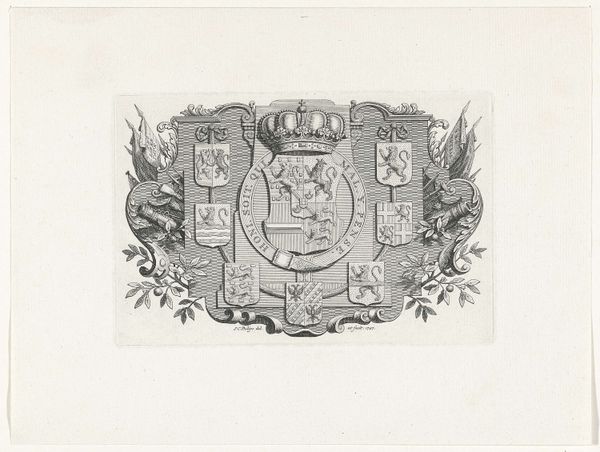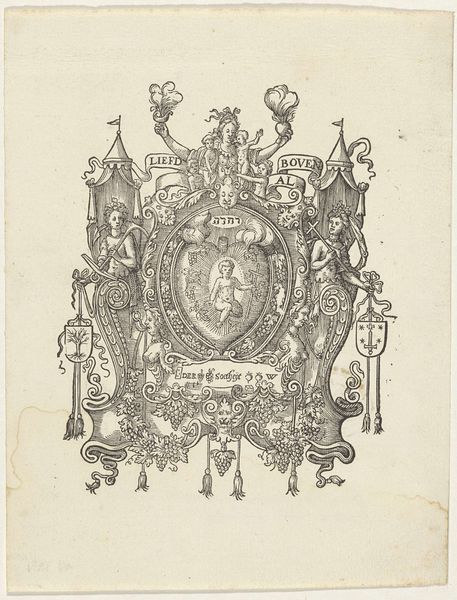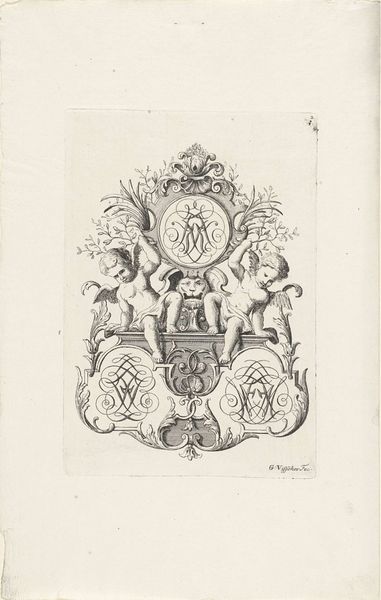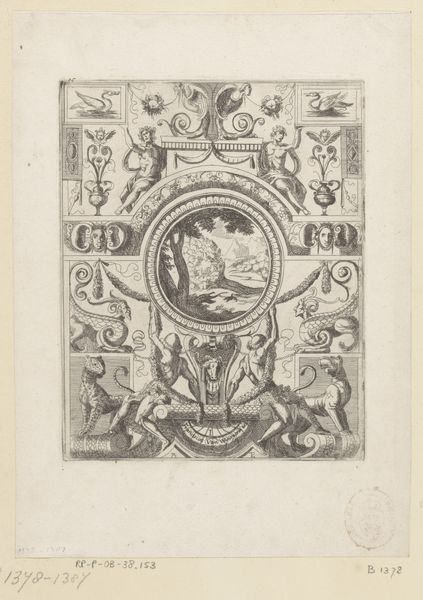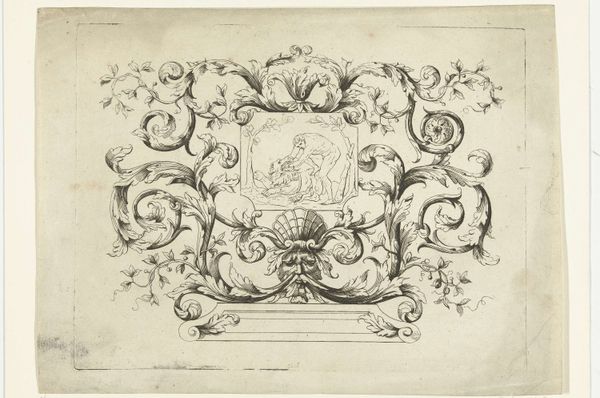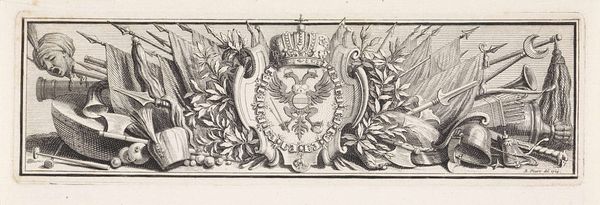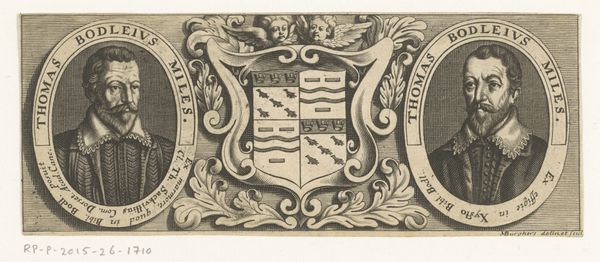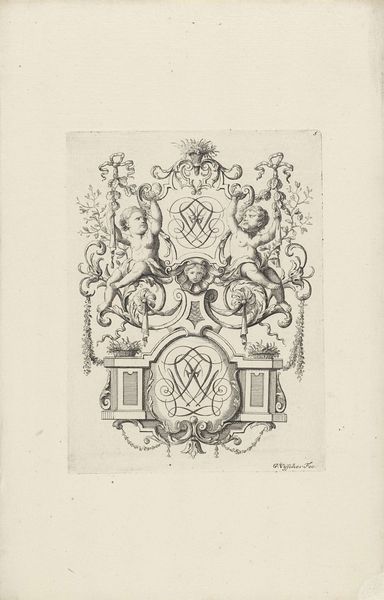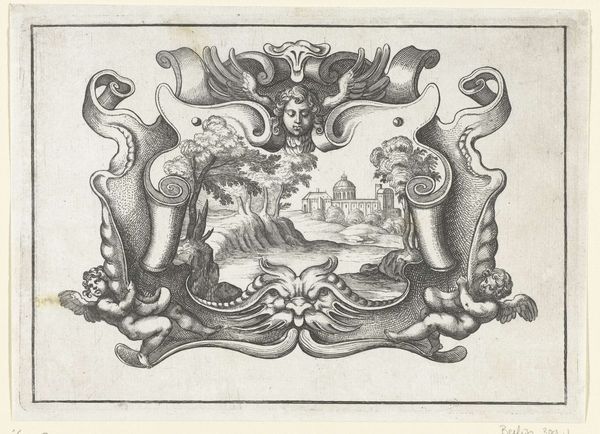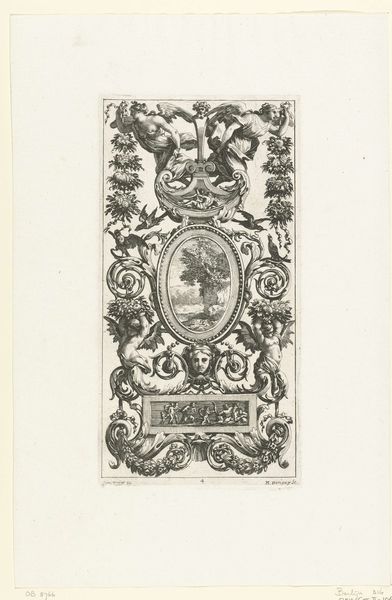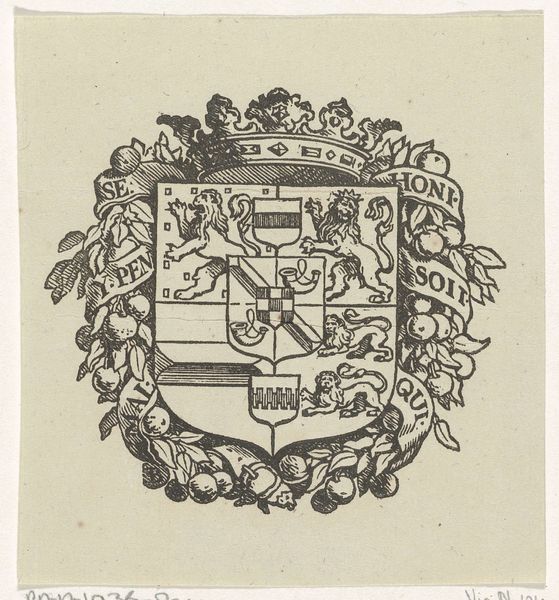
drawing, print, engraving
#
drawing
#
toned paper
#
light pencil work
#
baroque
#
pen drawing
#
shading to add clarity
# print
#
pen sketch
#
old engraving style
#
personal sketchbook
#
geometric
#
pen-ink sketch
#
pen work
#
sketchbook drawing
#
engraving
Dimensions: height 83 mm, width 122 mm
Copyright: Rijks Museum: Open Domain
Curator: This engraving, dating from between 1712 and 1744, depicts an ornament featuring the Order of the Garter's coat of arms. Editor: It's austere, but visually rich. I immediately notice the linework—dense yet delicate. The crown and surrounding ornamentation project a sense of power, yet the monochrome print feels strangely demure. Curator: The Order of the Garter, a British order of chivalry, was established in 1348. Understanding this historical context allows us to consider its symbolic importance, particularly its ties to ideas of national identity, elitism, and gendered power dynamics—considering the relatively exclusive club of members, of course. Editor: Absolutely. And from a material perspective, the choice of engraving—a replicable medium—speaks to a wider dissemination of these power symbols, extending the reach of its influence beyond a closed circle. The skill involved is undeniable; look at the control over the burin, how it creates such subtle gradations of tone. This wasn't just about disseminating a symbol; it was about crafting it meticulously. Curator: Exactly. This isn't just a drawing; it's an assertion of authority made tangible through artistic craft. The coat of arms is rife with meaning. And think, the 'shame' element invoked in the motto - "Honi soit qui mal y pense," is a potent commentary on the performance of honor, class and the construction of social perception at the time. It is also interesting from a semiotic point of view how codes of chivalry have been maintained or resisted. Editor: And while it's meant to communicate stability and permanence, its reliance on fragile paper and replicable printing techniques underlines how even the most entrenched power structures depend on the material means to sustain themselves, constantly reinforcing themselves via artistic practice. It almost hints at its own potential fragility in the sweep of history, in my view. Curator: Yes. Its artful crafting ensured a more widespread reverence than any royal edict. Editor: The details draw you into another era. It's fascinating to consider its material form as an assertion and a symbol of potential weakness within the networks of labor and distribution.
Comments
No comments
Be the first to comment and join the conversation on the ultimate creative platform.
